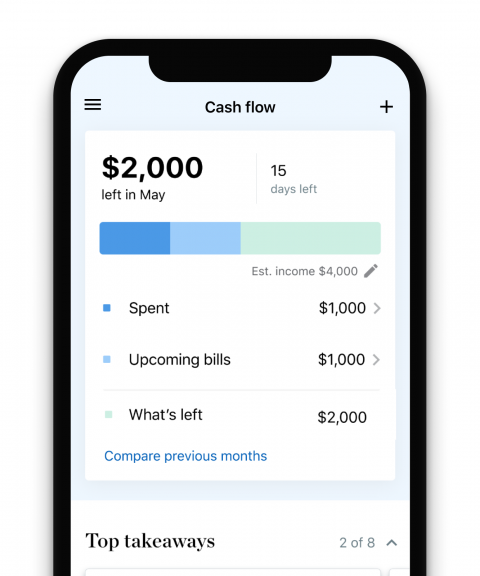How Much to Budget for Baby First Year
Becoming a parent should bring mostly excitement and joy, but a little bit of panic is normal, particularly when you think about the baby budget.
Before you learn how to build a budget and tackle other money matters related to parenting , consider this warning: Becoming a parent will keep your finances in flux for years to come. You're in for a challenging ride. Stay calm. When it comes to budgeting for parenthood, the keys are equal parts preparedness and flexibility.
Budgeting for a baby
A NerdWallet study found that in the first year alone, the cost of raising a baby can run upward of $21,000, and the cost of raising a child to adulthood dwarfs that. But while your expenses will both change when you have a child, your budgeting approach doesn't have to. You're still stretching your income to cover your expenses and debts, plus savings.
Before you build a budget
Track all your spending at a glance to understand your trends and spot opportunities to save money.

If you're new to budgeting, we recommend divvying up your income with the 50/30/20 approach :
-
50% for needs such as household bills, minimum loan payments and expenses such as child care, diapers and formula.
-
20% for savings and payments on toxic debts, such as payday loans and credit card balances.
This split is a goal. You could find your needs take up much more than 50% of your income — not uncommon for many middle-income families, particularly those with a child in day care — and that's OK. The point is that you're tracking your spending and aiming for improvement.
This 50/30/20 budget calculator can give you a better idea of how your current budget breaks down. Once you've established a spending baseline, track your progress from month to month.
How to build a baby budget in 4 steps
1. Determine your financial priorities
New parents are often in a rush to save for their child's education, and that's commendable. But this shouldn't come at the cost of your current and future financial security. After all, you can borrow money for college, but not for retirement.
Once you have a small amount of emergency cash to cover unexpected expenses — say $500 — your financial priorities should be as follows:
-
Retirement savings: To make sure you're saving enough for the future, try this retirement calculator . You should ideally set aside 15% of your income, but save at least enough to qualify for the maximum employer match on your 401(k), if your workplace offers one.
-
Toxic debt payments: Pay off debt that is hurting you. Balances on payday loans, credit cards and title loans, for example, cost you daily and prevent you from focusing on other financial priorities.
-
Contributions to an emergency fund: Build your emergency fund from that $500 seed, aiming for enough to replace several months of income.
That being said, if your relatives are itching to help fund junior's university years and you can afford to put aside an extra $15-$25 per month, set up a 529 plan . You can deposit the minimum required for now, and generous family members can also contribute.
2. Practice living on less
Your income might change after having a child, even if temporarily. One parent might take some unpaid maternity or paternity leave, or one might leave work entirely.
Practice living on this lower income in the months leading up to your due date. Set aside the income of the soon-to-be stay-at-home parent to get accustomed to a smaller budget and to save for child care and other upcoming expenses.
3. Anticipate changing expenses
Formula, diapers and day care expenses won't last forever. Those costs will fall off your budget as your child grows, and expenses like dance lessons and auto insurance will eventually take their place.
In the meantime:
-
Estimate the amount you'll spend in the first year using this cost of baby calculator . Fine-tune this amount by getting quotes from local child care centers if you plan to put your baby in day care.
-
Research ways to reduce that cost:
-
Compare the cost of adding a child to all working parents' health insurance plans.
-
Buy secondhand.
-
Request must-haves at your baby shower(s).
-
Shop around for child care.
-
-
Anticipate how long these costs will last. Many costs to first-time parents are one-time expenses, including the crib and the strollers. Others continue for just a few years, such as child care until your kid goes to school.
-
Review upcoming expenses monthly when you sit down to pay your bills. You don't want to be unprepared, so find space in your budget as best you can in advance.
4. Prepare for when there just isn't enough
Sometimes there just isn't enough money. Cutting expenses and increasing household income are the two basic strategies for balancing your new budget, but this can be easier said than done. If you haven't already, look closely at these options:
-
Eliminate unnecessary monthly subscriptions, such as streaming services or unused gym memberships.
Like some of the increases in household expenses associated with parenting, these sacrifices can be temporary, too.
How Much to Budget for Baby First Year
Source: https://www.nerdwallet.com/article/finance/baby-budget-new-parents
0 Response to "How Much to Budget for Baby First Year"
Mag-post ng isang Komento